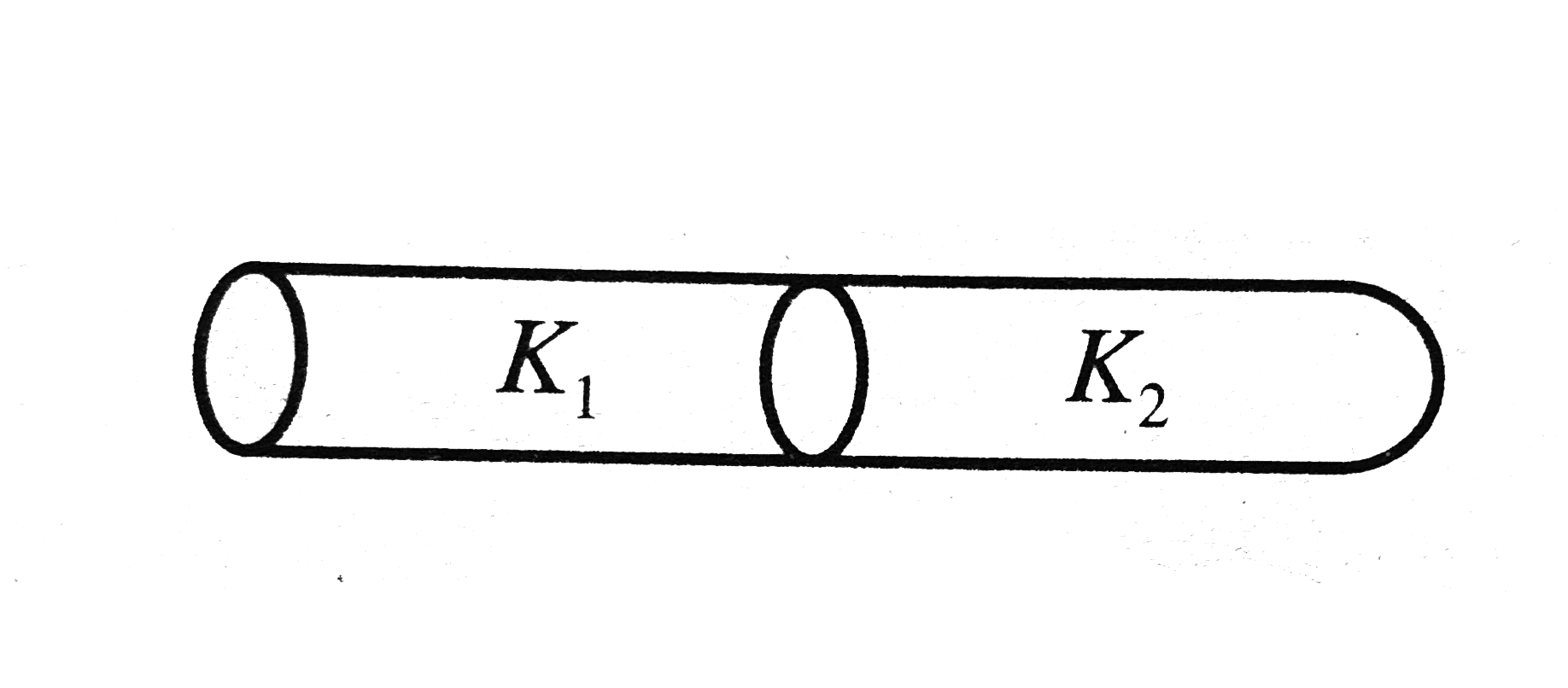σ1,σ2,σ3 are the conductances of three conductors. What will be their equivalent conductance when they are connected, (i) in series (ii) in parallel.
σ1+σ2+σ3
1σ1+2σ2+1σ3
σ1σ2σ3σ1+σ2+σ3
none of these
The correct Answer is:D
To find the equivalent conductance of three conductors with conductances σ1,σ2,σ3 when connected in series and in parallel, we can follow these steps:
1. Understand the relationship between conductance and resistance:
Conductance σ is the reciprocal of resistance R:
σ=1RorR=1σ
2. Write the expression for equivalent resistance in series:
For resistors in series, the equivalent resistance Req is given by:
Req=R1+R2+R3
3. Substitute the conductance values:
Using the relationship Ri=1σi:
Req=1σ1+1σ2+1σ3
4. Take the reciprocal to find equivalent conductance:
The equivalent conductance σeq is given by:
σeq=1Req=1(1σ1+1σ2+1σ3)
5. Simplify the expression:
To simplify, find a common denominator:
σeq=σ1σ2σ3σ2σ3+σ3σ1+σ1σ2
(ii) Equivalent Conductance in Parallel:
1. Write the expression for equivalent resistance in parallel:
For resistors in parallel, the equivalent resistance Req is given by:
1Req=1R1+1R2+1R3
2. Substitute the conductance values:
Using the relationship Ri=1σi:
1Req=σ1+σ2+σ3
3. Find the equivalent conductance:
The equivalent conductance σeq is simply:
σeq=σ1+σ2+σ3
Final Results:
- Equivalent Conductance in Series:
σeq (series)=σ1σ2σ3σ2σ3+σ3σ1+σ1σ2
- Equivalent Conductance in Parallel:
σeq (parallel)=σ1+σ2+σ3
Conductance σ is the reciprocal of resistance R:
σ=1RorR=1σ
For resistors in series, the equivalent resistance Req is given by:
Req=R1+R2+R3
Using the relationship Ri=1σi:
Req=1σ1+1σ2+1σ3
The equivalent conductance σeq is given by:
σeq=1Req=1(1σ1+1σ2+1σ3)
To simplify, find a common denominator:
σeq=σ1σ2σ3σ2σ3+σ3σ1+σ1σ2
For resistors in parallel, the equivalent resistance Req is given by:
1Req=1R1+1R2+1R3
Using the relationship Ri=1σi:
1Req=σ1+σ2+σ3
The equivalent conductance σeq is simply:
σeq=σ1+σ2+σ3
- Equivalent Conductance in Series:
σeq (series)=σ1σ2σ3σ2σ3+σ3σ1+σ1σ2
σeq (parallel)=σ1+σ2+σ3
Similar Questions
Two metal wires of identical dimesnios are connected in series. If σ1 and σ2 are the conducties of the metal wires respectively, the effective conductivity of the combination is
View SolutionA cylindrical conductor has length l and area of cross section A. Its conductivity changes with distance (x) from one of its ends as σ=σ0lx.[σ0is a constant]. Calculate electric field inside the conductor as a function of x, when a cell of emf V is connected across the ends.

View Solution
Knowledge Check
If σx=3,σy=4, and bxy=13, then the value of r is
A14B94C49D4Two metal wires of identical dimesnios are connected in series. If σ1 and σ2 are the conducties of the metal wires respectively, the effective conductivity of the combination is
Aσ1+σ2Bσ1+σ22C√σ1+σ2D2σ1+σ2σ1+σ2
For a metallic conductor, what is the relation between current density (J), conductivity (σ) and electric field intensity E?
View Solution
The pressures at A and B in the atmosphere are, respectively,
View Solution
Statement I: Two solid cylindrical rods of identical size and different thermal conductivity K1 and K2 are connected in series. Then the equivalent thermal conductivity of two rods system is less than that value of thermal conductivity of either rod.
Statement II: For two cylindrical rods of identical size and different thermal conductivity K1 and K2 connected in series, the equivalent thermal conductivity K is given by 2K=1K1+1K2
View Solution
Statement I: Two solid cylindrical rods of identical size and different thermal conductivity K1 and K2 are connected in series. Then the equivalent thermal conductivity of two rods system is less than that value of thermal conductivity of either rod.
Statement II: For two cylindrical rods of identical size and different thermal conductivity K1 and K2 connected in series, the equivalent thermal conductivity K is given by 2K=1K1+1K2
View SolutionTwo spherical conductors of radii 4cmand5cm are charged to the same potential. If σ1andσ2 be respective value of surface density of charge on both the conductors, then the ratio of σ1/σ2 will be
View SolutionThe cross-section area and length of cylindrical conductor are A and l respectively. The specific conductivity varies as σ(x)=σ0l√x, where x is the distance along the axis of the cylinder from one of its ends. Compute the resistance of the system along the cylindrical axis.
View Solution
